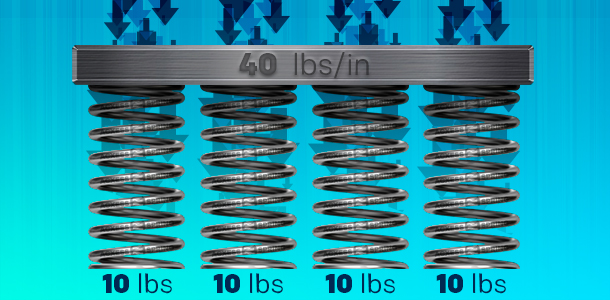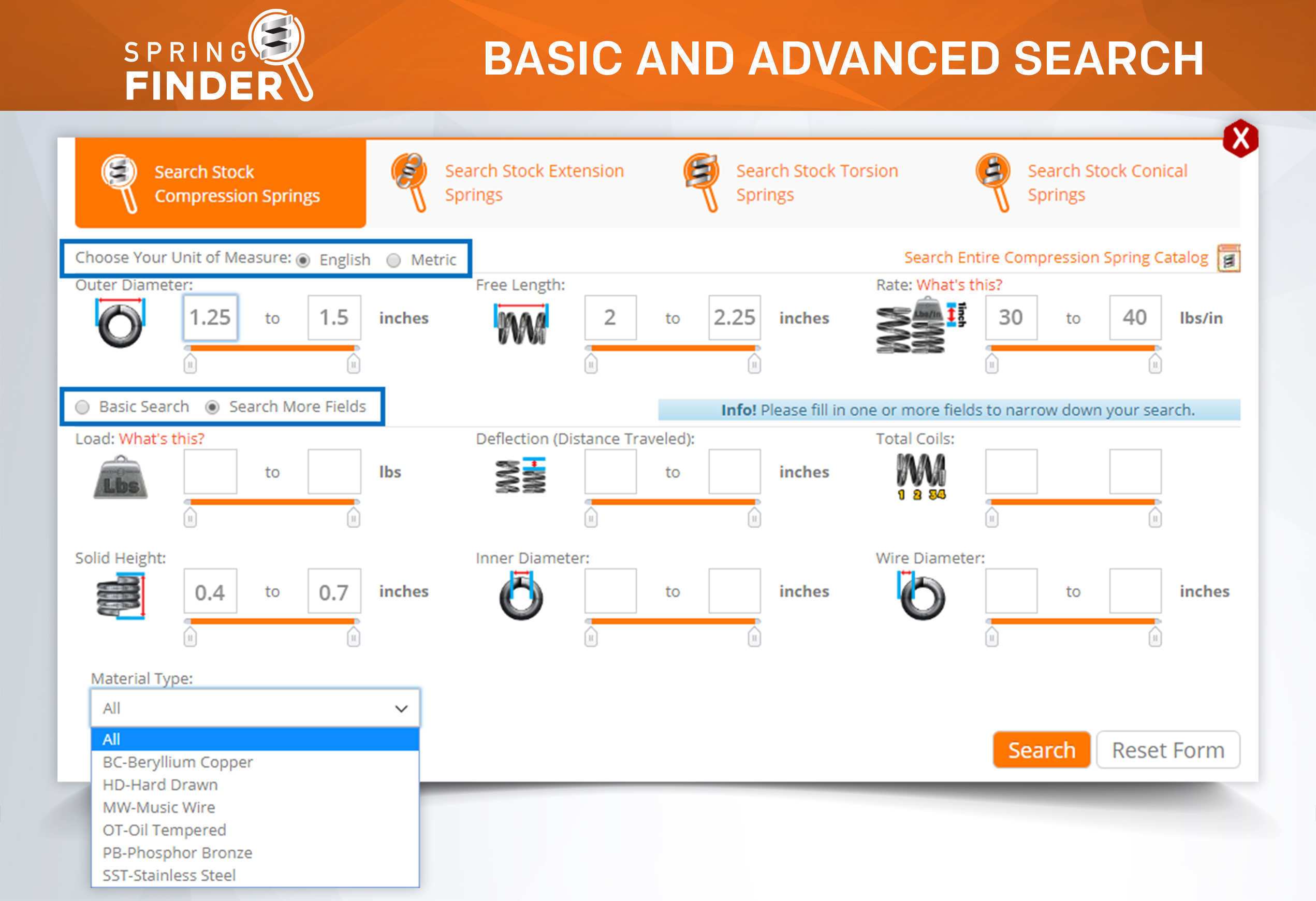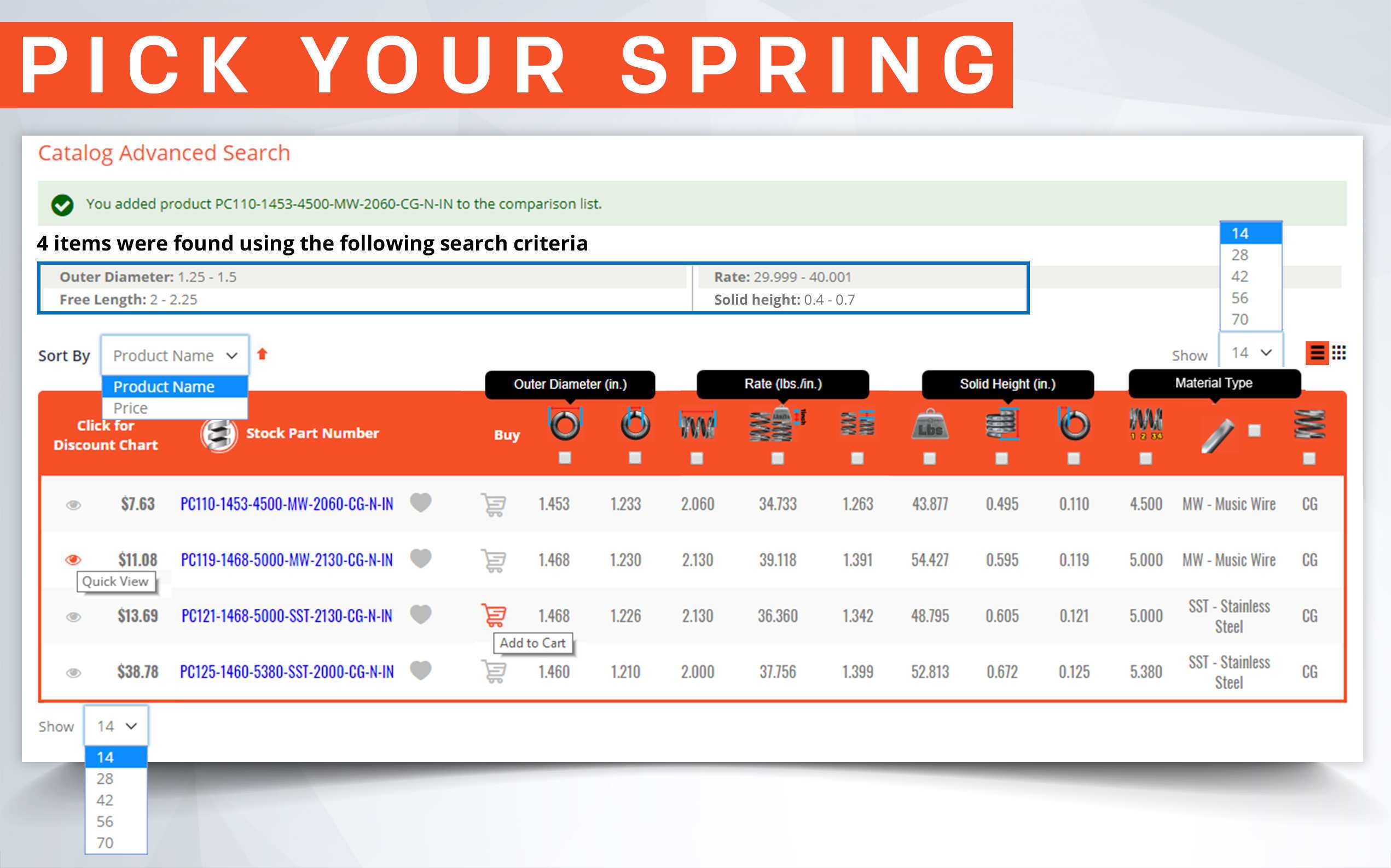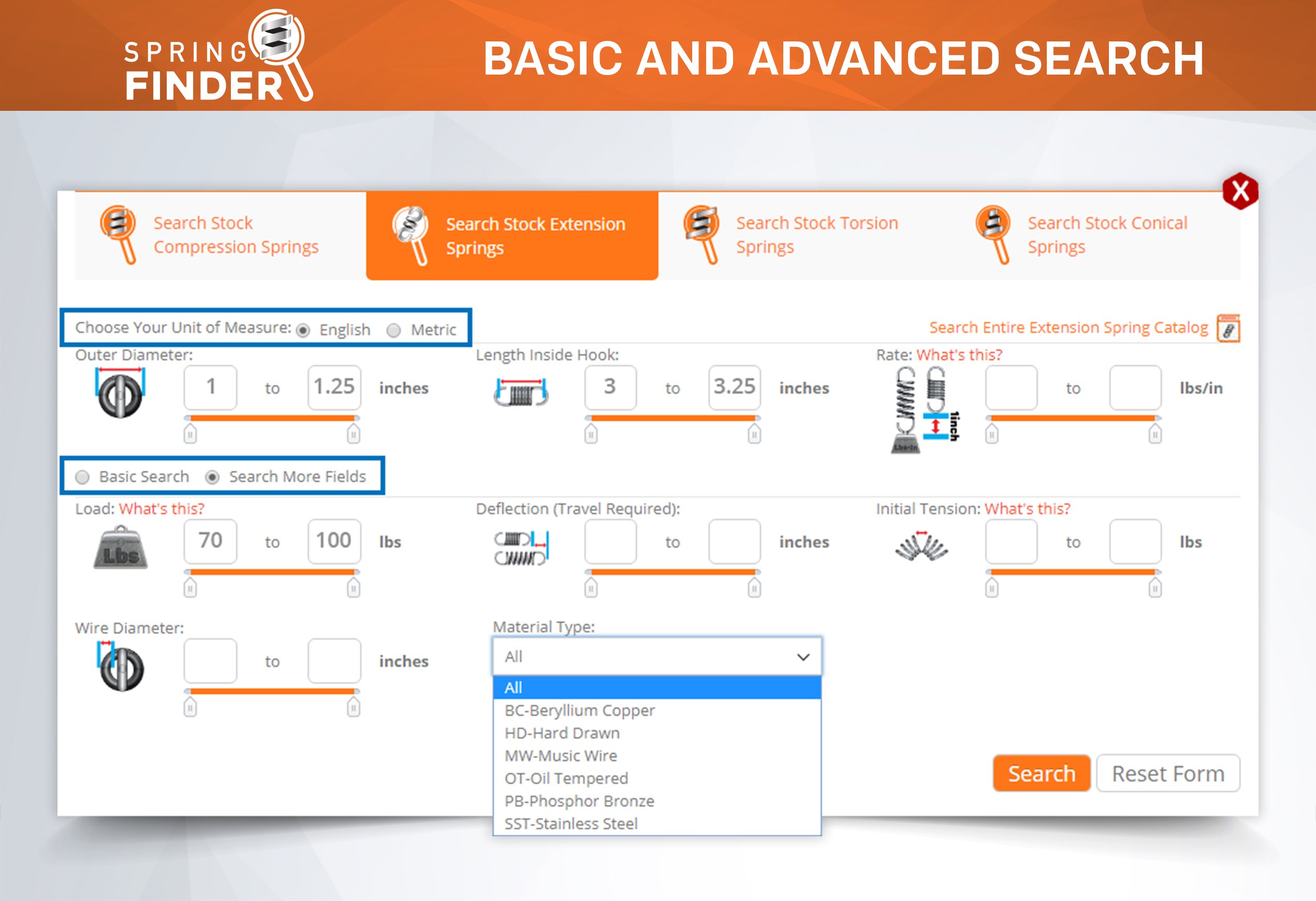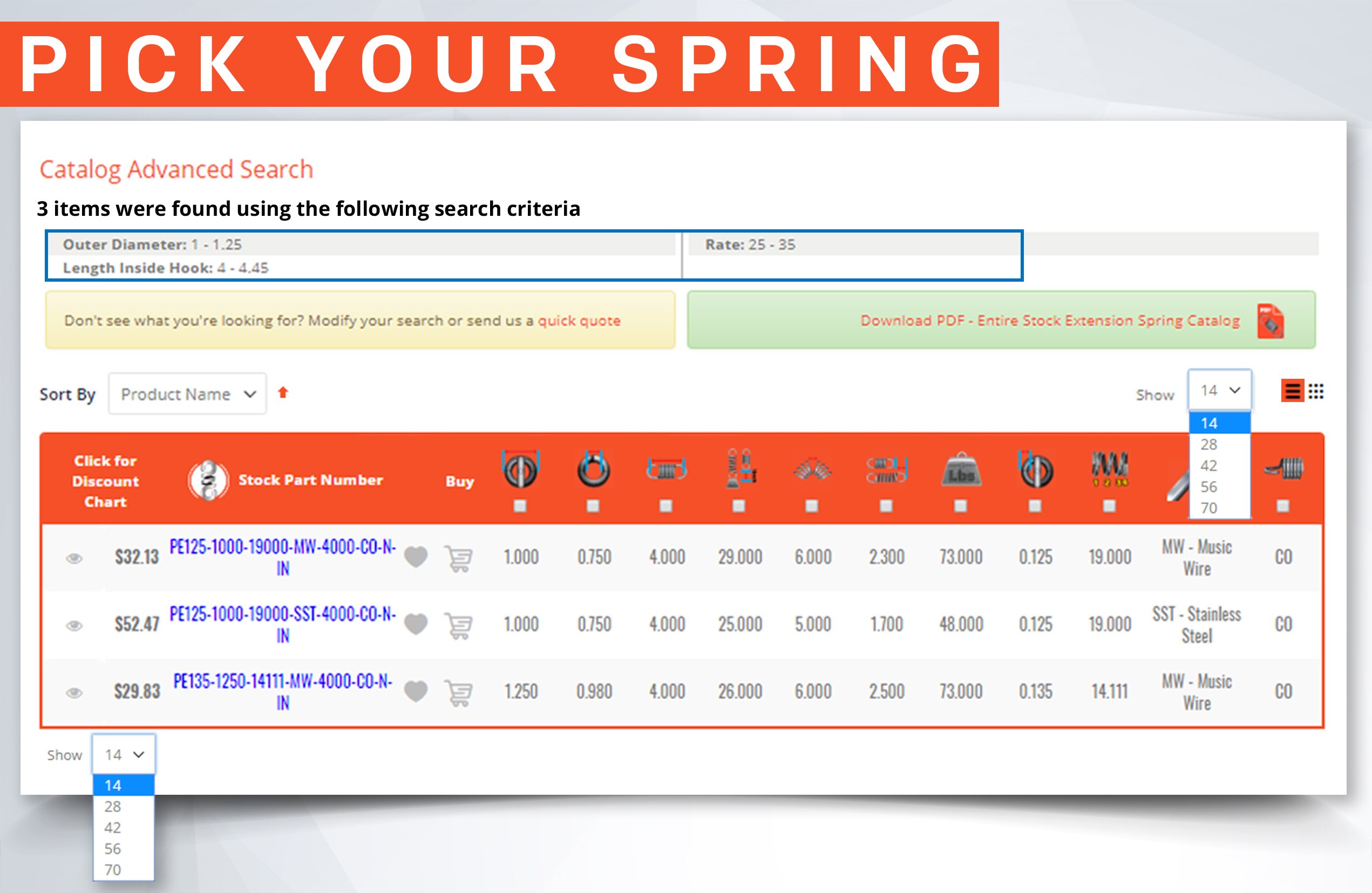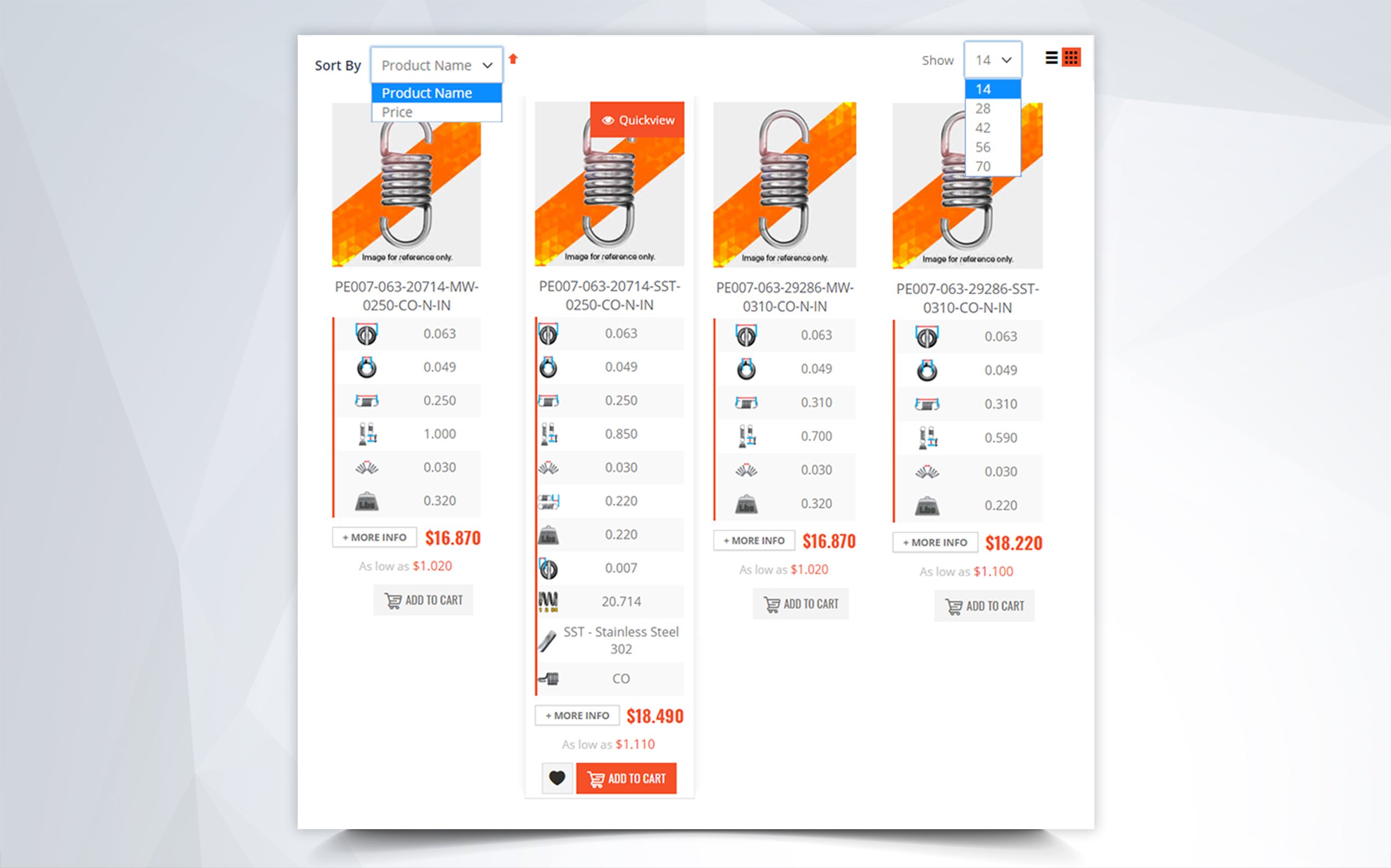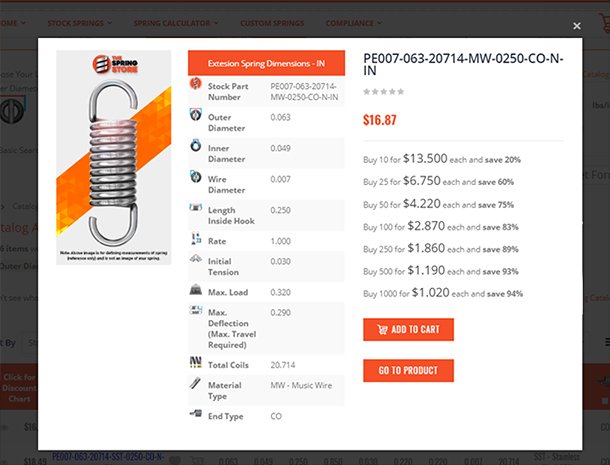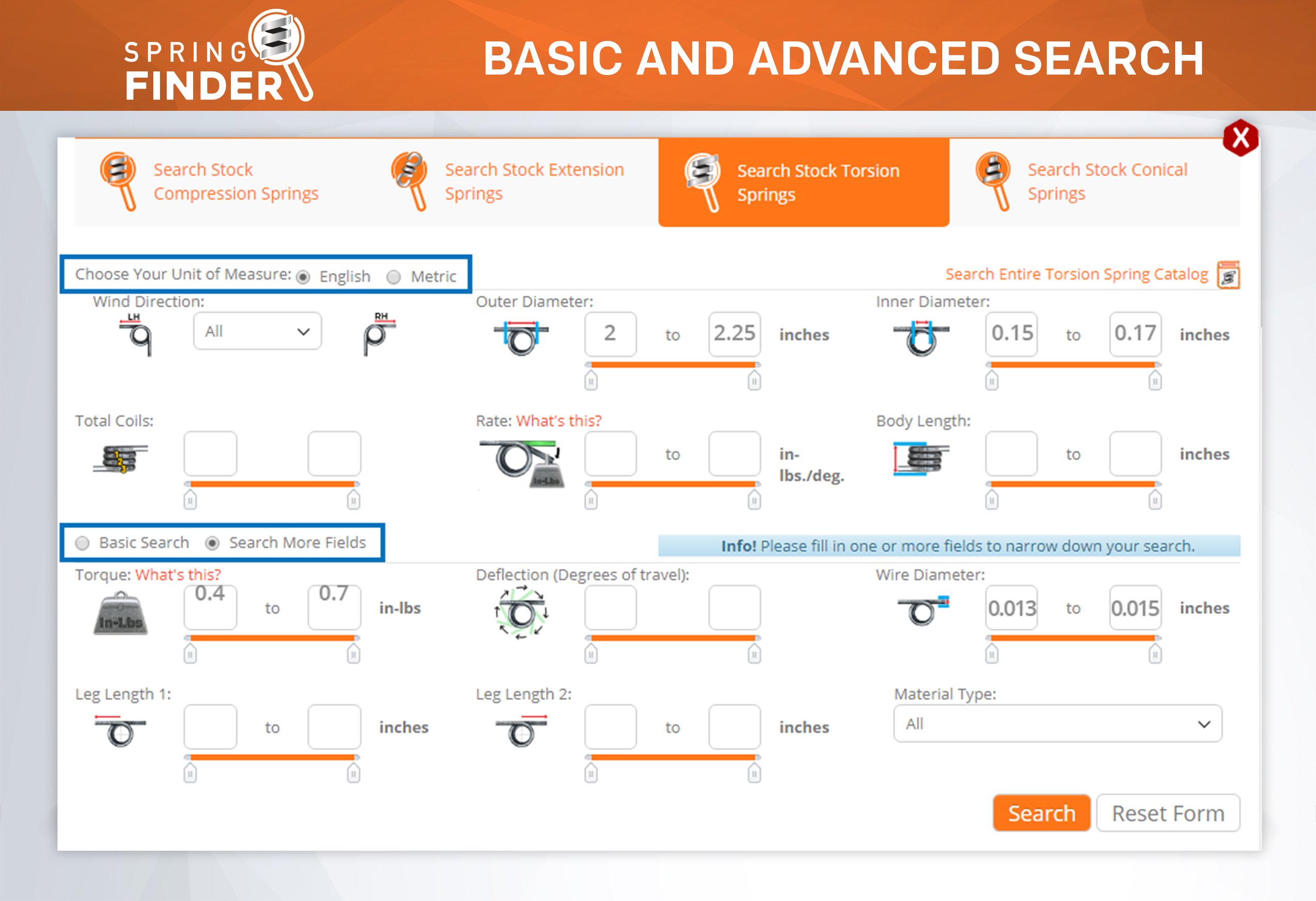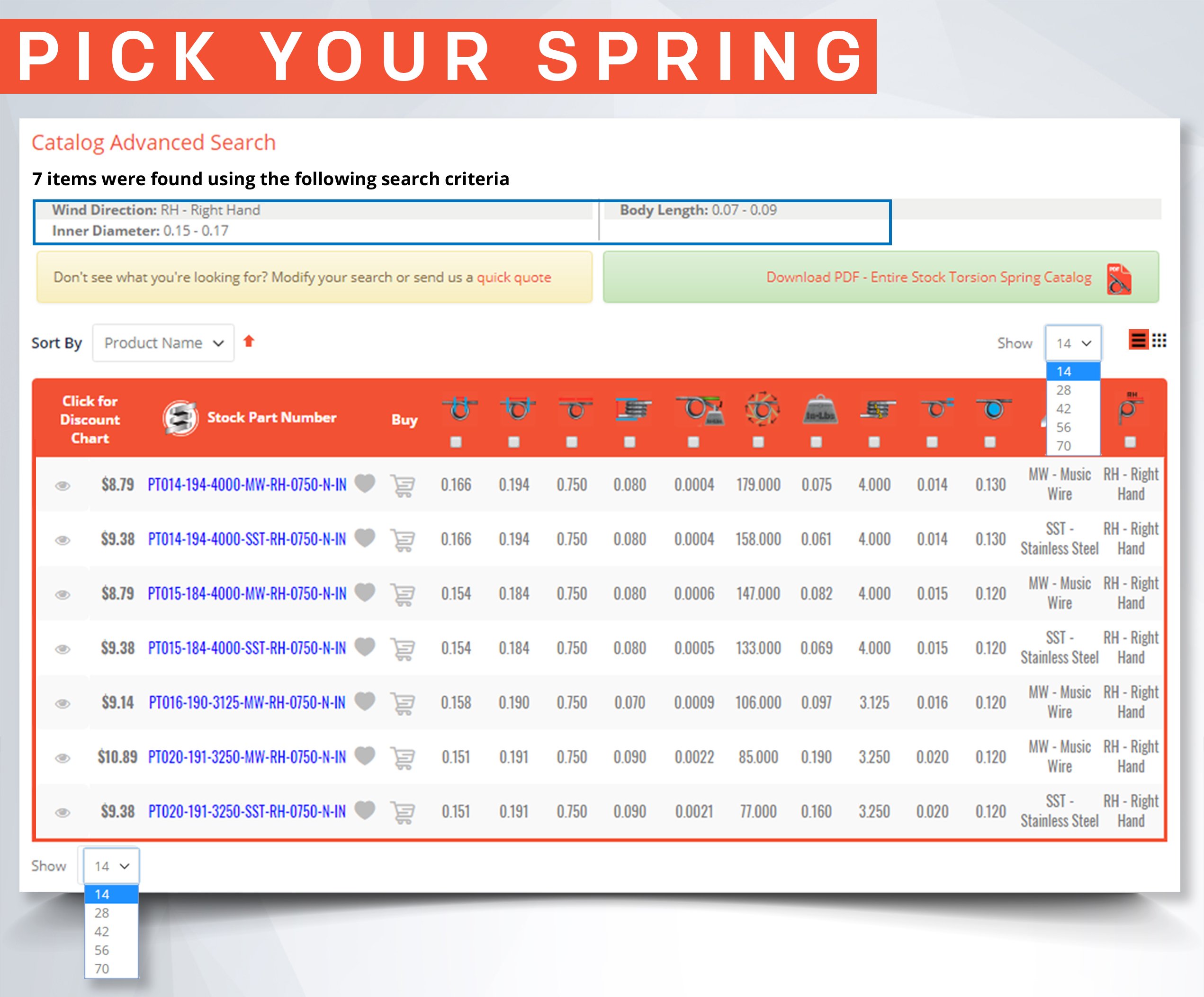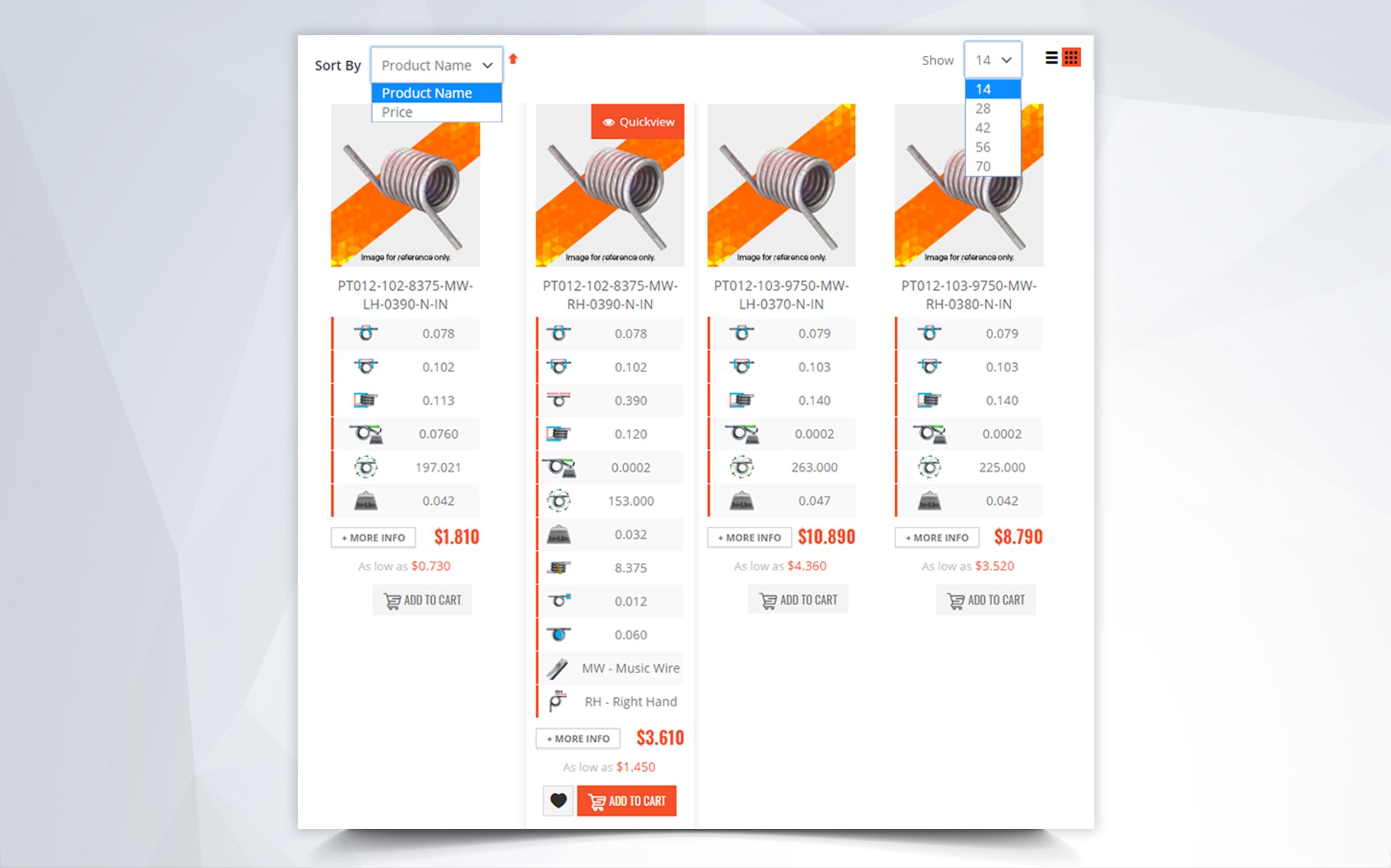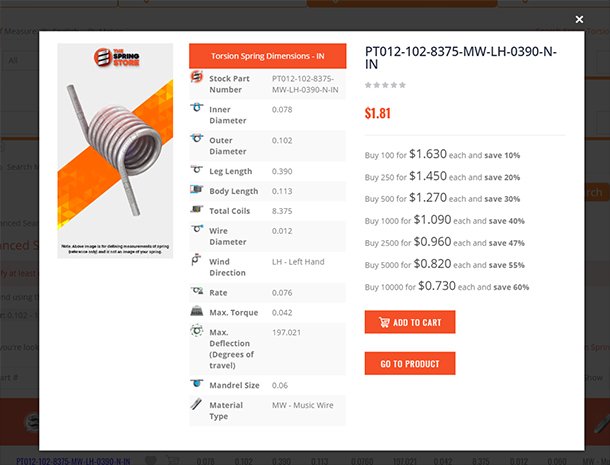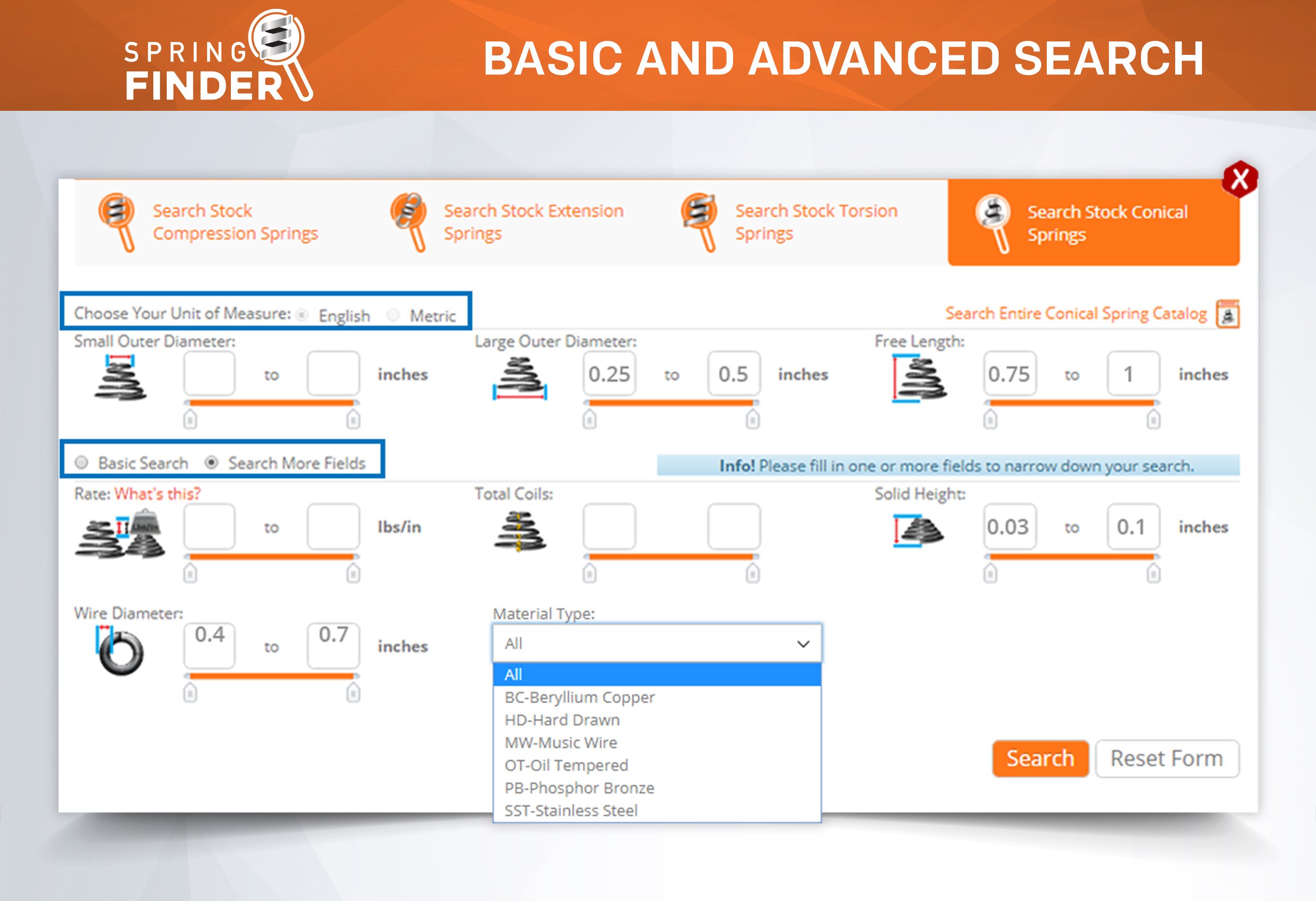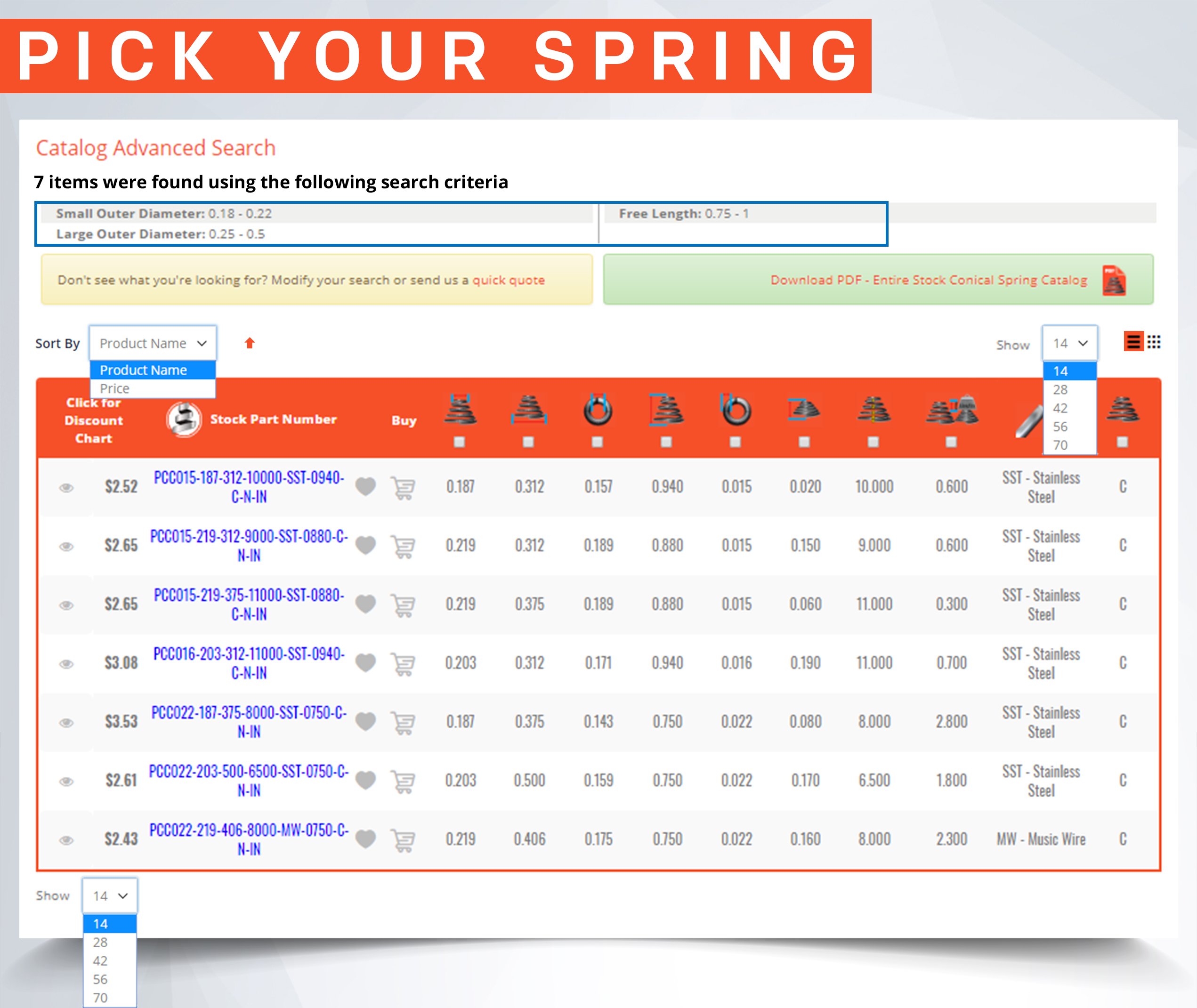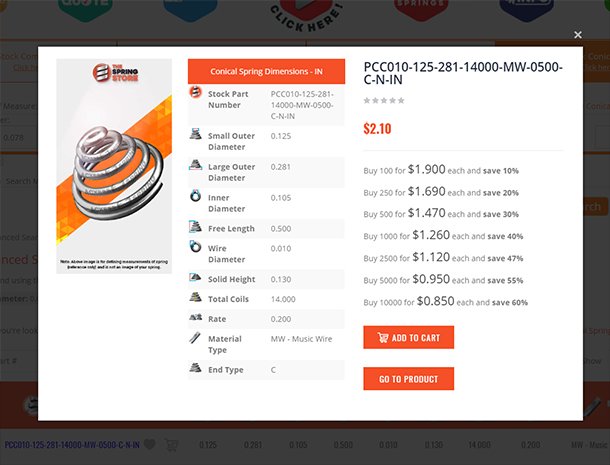Springs in Parallel
Definition of Parallel Springs
When a group of springs work together under one force or load.
When springs work in parallel, you have more force to withstand your working loads. Ninety nine percent of the time the springs will be identical which is why we’ve provided you with the following formulas to calculate the amount of force (equivalent rate) you’re generating when placing a load on these springs.
Rate With Identical Springs Example
If you have 4 identical compression springs, and need to have an equivalent spring rate of 40 pounds per inch (lbs/in), you divide the equivalent rate by the number of springs. The result of this equation is the constant spring rate/force that each spring needs to have.
Formula for Parallel Springs Rate
Single Spring Rate = Equivalent Rate ÷ Number of SpringsParallel Springs Rate Calculation
Single Spring Rate = 40 lbs/in ÷ 4 springs Single Spring Rate = 10 lbs/in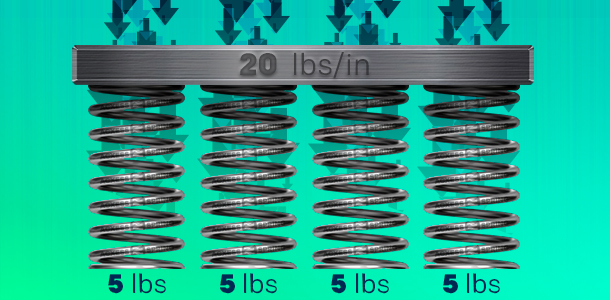
Load With Identical Springs Example
To know how much load you will achieve per spring, you will also need to divide the equivalent load by the number of springs. If you’re applying a force of 20 pounds and divide it by 4 springs, the load each spring will be carrying is 5 pounds.
Equation to Calculate Load Per Spring
Load p/ Spring = Equivalent Load ÷ Number of SpringsParallel Springs Load Calculation
Load p/ Spring = 20 lbs ÷ 4 springs Load p/Spring = 5 lbs